Following is the list of cities and the associated costs for Cornea Transplant in India:
| City | Minimum Cost (USD) | Minimum Cost (INR) | Maximum Cost (USD) | Maximum Cost (INR) |
|---|---|---|---|---|
| Noida | USD 3500 | 291025 | USD 4500 | 374175 |
| Mumbai | USD 3500 | 291025 | USD 4500 | 374175 |
| Chennai | USD 3500 | 291025 | USD 4500 | 374175 |
| Ahmedabad | USD 3150 | 261923 | USD 4050 | 336758 |
| Kolkata | USD 3500 | 291025 | USD 4500 | 374175 |
Following is the list of countries and the associated costs for Cornea Transplant:
Treatment cost
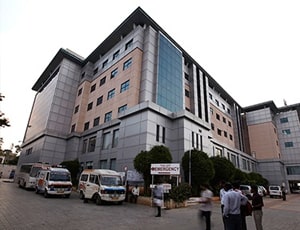
Types of Cornea Transplant in BGS Gleneagles Global Hospitals and its associated cost
| Treatment Option | Approximate Cost Range (USD) | Approximate Cost Range (INR) |
|---|---|---|
| Cornea Transplant (Overall) | 1686 - 4512 | 136166 - 374165 |
| Penetrating Keratoplasty | 1712 - 4598 | 138175 - 365168 |
| Lamellar Keratoplasty | 2218 - 3950 | 182879 - 328708 |
| Endothelial Keratoplasty | 2859 - 4461 | 234316 - 363077 |
| Deep Anterior Lamellar Keratoplasty (DALK) | 2257 - 3937 | 185169 - 317224 |
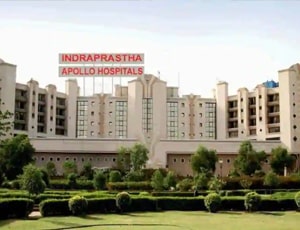
Types of Cornea Transplant in Indraprastha Apollo Hospital and its associated cost
| Treatment Option | Approximate Cost Range (USD) | Approximate Cost Range (INR) |
|---|---|---|
| Cornea Transplant (Overall) | 1673 - 4408 | 139599 - 366576 |
| Penetrating Keratoplasty | 1710 - 4452 | 140511 - 372083 |
| Lamellar Keratoplasty | 2293 - 3853 | 181087 - 320270 |
| Endothelial Keratoplasty | 2812 - 4472 | 232576 - 361748 |
| Deep Anterior Lamellar Keratoplasty (DALK) | 2249 - 3871 | 185643 - 325446 |
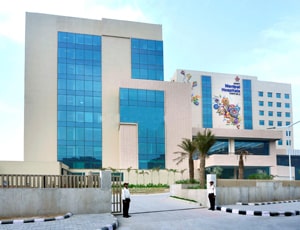
Types of Cornea Transplant in Manipal Hospital, Dwarka and its associated cost
| Treatment Option | Approximate Cost Range (USD) | Approximate Cost Range (INR) |
|---|---|---|
| Cornea Transplant (Overall) | 1527 - 4070 | 125382 - 333245 |
| Penetrating Keratoplasty | 1520 - 4073 | 125171 - 332243 |
| Lamellar Keratoplasty | 2022 - 3552 | 165741 - 290145 |
| Endothelial Keratoplasty | 2544 - 4071 | 207726 - 333453 |
| Deep Anterior Lamellar Keratoplasty (DALK) | 2030 - 3565 | 166990 - 290343 |

Types of Cornea Transplant in The Madras Institute of Orthopedics and Traumatology and its associated cost
| Treatment Option | Approximate Cost Range (USD) | Approximate Cost Range (INR) |
|---|---|---|
| Cornea Transplant (Overall) | 1389 - 3706 | 113463 - 304499 |
| Penetrating Keratoplasty | 1399 - 3781 | 114815 - 301992 |
| Lamellar Keratoplasty | 1858 - 3297 | 152181 - 268246 |
| Endothelial Keratoplasty | 2350 - 3795 | 192422 - 307631 |
| Deep Anterior Lamellar Keratoplasty (DALK) | 1896 - 3255 | 152788 - 264423 |
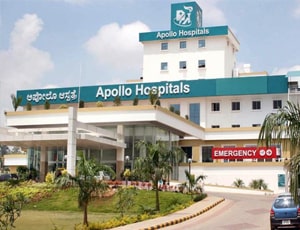
Types of Cornea Transplant in Apollo Hospitals Bannerghatta and its associated cost
| Treatment Option | Approximate Cost Range (USD) | Approximate Cost Range (INR) |
|---|---|---|
| Cornea Transplant (Overall) | 1704 - 4482 | 140779 - 367630 |
| Penetrating Keratoplasty | 1706 - 4429 | 138489 - 363063 |
| Lamellar Keratoplasty | 2247 - 3934 | 181695 - 325568 |
| Endothelial Keratoplasty | 2810 - 4467 | 228891 - 363975 |
| Deep Anterior Lamellar Keratoplasty (DALK) | 2261 - 4002 | 184520 - 316606 |
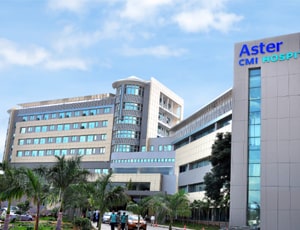
Types of Cornea Transplant in Aster CMI Hospital and its associated cost
| Treatment Option | Approximate Cost Range (USD) | Approximate Cost Range (INR) |
|---|---|---|
| Cornea Transplant (Overall) | 1527 - 4058 | 124899 - 332567 |
| Penetrating Keratoplasty | 1526 - 4043 | 125106 - 332689 |
| Lamellar Keratoplasty | 2033 - 3535 | 166265 - 290116 |
| Endothelial Keratoplasty | 2538 - 4077 | 207419 - 331823 |
| Deep Anterior Lamellar Keratoplasty (DALK) | 2022 - 3567 | 165804 - 290397 |
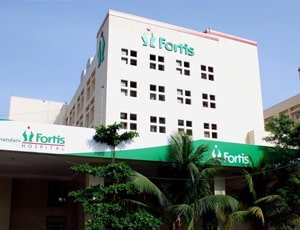
Types of Cornea Transplant in Fortis Hiranandani Hospital and its associated cost
| Treatment Option | Approximate Cost Range (USD) | Approximate Cost Range (INR) |
|---|---|---|
| Cornea Transplant (Overall) | 1520 - 4043 | 124617 - 334017 |
| Penetrating Keratoplasty | 1515 - 4056 | 125287 - 332475 |
| Lamellar Keratoplasty | 2027 - 3545 | 165884 - 292438 |
| Endothelial Keratoplasty | 2527 - 4079 | 208819 - 331901 |
| Deep Anterior Lamellar Keratoplasty (DALK) | 2023 - 3535 | 166945 - 291548 |
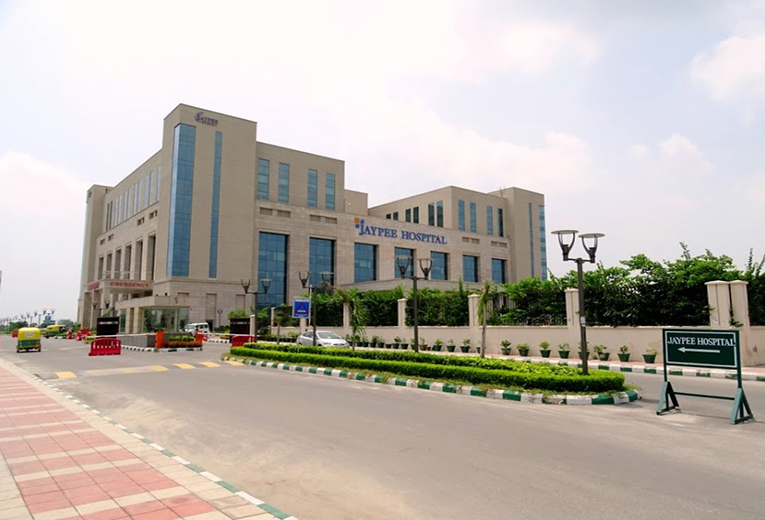
Jaypee Hospital located in Noida, India is accredited by ISO, NABH, NABL. Also listed below are some of the most prominent infrastructural details:
Aakash Healthcare Super Speciality Hospital located in New Delhi, India is accredited by NABH. Also listed below are some of the most prominent infrastructural details:
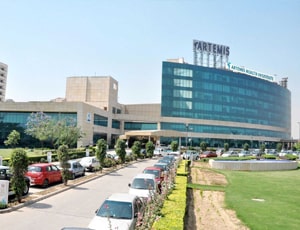
Types of Cornea Transplant in Artemis Health Institute and its associated cost
| Treatment Option | Approximate Cost Range (USD) | Approximate Cost Range (INR) |
|---|---|---|
| Cornea Transplant (Overall) | 1715 - 4573 | 136688 - 367804 |
| Penetrating Keratoplasty | 1711 - 4455 | 136353 - 372021 |
| Lamellar Keratoplasty | 2225 - 4022 | 186358 - 326069 |
| Endothelial Keratoplasty | 2824 - 4546 | 232872 - 364376 |
| Deep Anterior Lamellar Keratoplasty (DALK) | 2221 - 3891 | 180844 - 319573 |
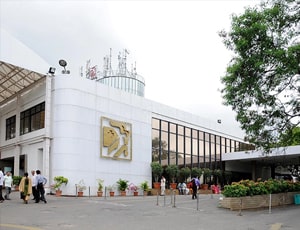
Types of Cornea Transplant in Apollo Hospitals and its associated cost
| Treatment Option | Approximate Cost Range (USD) | Approximate Cost Range (INR) |
|---|---|---|
| Cornea Transplant (Overall) | 1665 - 4497 | 140975 - 370046 |
| Penetrating Keratoplasty | 1662 - 4449 | 135827 - 363954 |
| Lamellar Keratoplasty | 2246 - 3904 | 182356 - 322199 |
| Endothelial Keratoplasty | 2761 - 4502 | 229152 - 363685 |
| Deep Anterior Lamellar Keratoplasty (DALK) | 2280 - 3904 | 185968 - 318366 |
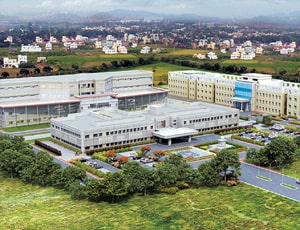
Types of Cornea Transplant in Global Health City and its associated cost
| Treatment Option | Approximate Cost Range (USD) | Approximate Cost Range (INR) |
|---|---|---|
| Cornea Transplant (Overall) | 1670 - 4446 | 136752 - 373494 |
| Penetrating Keratoplasty | 1715 - 4483 | 137301 - 362592 |
| Lamellar Keratoplasty | 2280 - 3923 | 182747 - 316126 |
| Endothelial Keratoplasty | 2848 - 4484 | 229579 - 366253 |
| Deep Anterior Lamellar Keratoplasty (DALK) | 2281 - 3942 | 185775 - 318222 |

Types of Cornea Transplant in Memorial Atasehir Hospital and its associated cost
| Treatment Option | Approximate Cost Range (USD) | Approximate Cost Range (TRY) |
|---|---|---|
| Cornea Transplant (Overall) | 7356 - 9935 | 223234 - 307894 |
| Penetrating Keratoplasty | 4521 - 7957 | 135309 - 235337 |
| Lamellar Keratoplasty | 5008 - 7427 | 150682 - 224136 |
| Endothelial Keratoplasty | 5609 - 7860 | 173000 - 239477 |
| Deep Anterior Lamellar Keratoplasty (DALK) | 5050 - 7410 | 154528 - 219486 |

Types of Cornea Transplant in Medicana Bahcelievler Hospital and its associated cost
| Treatment Option | Approximate Cost Range (USD) | Approximate Cost Range (TRY) |
|---|---|---|
| Cornea Transplant (Overall) | 7465 - 10269 | 222766 - 310994 |
| Penetrating Keratoplasty | 4534 - 7934 | 132833 - 241186 |
| Lamellar Keratoplasty | 5092 - 7363 | 152808 - 219421 |
| Endothelial Keratoplasty | 5575 - 7896 | 167580 - 237652 |
| Deep Anterior Lamellar Keratoplasty (DALK) | 5128 - 7311 | 149881 - 218604 |
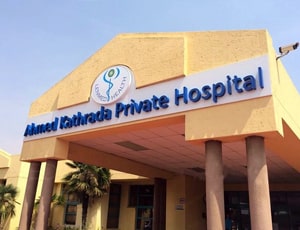
Apart from in-detail treatment procedures available, Lenmed Ahmed Kathrada Private Hospital located in Johannesburg, South Africa has a wide variety of facilities available for International Patients. Some of the facilities which are provided by them are Accommodation, Airport Transfer, Choice of Meals, Interpreter, SIM, TV inside room. Also listed below are some of the most prominent infrastructural details:
Cornea transplant surgery is also known as keratoplasty. It is a common surgery and has a good amount of success rate as well. Cornea transplant is required for people who have their corneal tissue damaged due to scarring or bruises. This affects the normal vision, which cannot be further corrected with the help of lens or medication. The cornea can swell thus resulting in distorted vision and it can grow painful, thus destroying the tissue gradually.
The following are some of the reasons why cornea replacement surgery may be required:
Cornea transplant surgery involves the replacement of the diseased cornea with a healthy cornea from a donor and it is performed commonly. However, there are some risks of rejection that would always be there. A corneal transplant is a surgery conducted to replace the cornea with a tissue retrieved from a donor. It is one of the most common types of transplants done. The cornea mainly comprises of five layers and it is not always necessary that all the layers are transplanted during the surgery.
In case of full thickness cornea transplant, all the 5 layers of the recipient are replaced with the healthy corneal layers of the donor. Lamellar cornea transplant includes only transplanting some of the layers of a donor’s cornea in the recipient patient’s corneal layers. The layers that are transplanted in this kind of surgery may include the deepest layer, which is known as the endothelium and this is generally known as the posterior lamellar cornea transplant. Some of the included procedures of this type of transplant include Descemet’s Stripping Automated
Endothelial Keratoplasty (DSAEK) or Descemet’s Membrane Endothelial Keratoplasty (DMEK). It may also have layers nearer to the surface included, which is referred as anterior lamellar cornea transplant. When only a portion of the cornea is diseased and not the entire cornea, then the lamellar transplants appears to be much more suitable compared to a full penetrating transplant.
Cornea transplant surgery is conducted on an outpatient basis, wherein the patient can leave the hospital on the same day of the surgery. In the pre-op or the waiting area, the patient is prepared for the surgery by giving medications, which would relax the patient.
A needle is attached to a tubing, which aids in delivering medications and fluids throughout the procedure to the vein of the patient. Electro leads are attached to the patient’s chest to have the performance of heart monitored at all stages. The above are some of the standard safety precautions.
Depending upon the condition of the patient, local or general anaesthesia may be administered before the surgery. Some of the determining factors can be age, length of the surgery, levels of anxiety of the patients, general health of the patient, and of course, the doctor’s choice. This should be discussed with the patient before the operation.
Once in the operating room, the patient’s eyelids are washed gently and carefully and then it is covered with plastic sterile drapes. Through a plastic tube, oxygen can be occasionally supplied somewhere close to the nose where the tube is placed. Most patients doze off during the procedure, while others may remain slightly conscious.
The instrument used to scrape off the part of the cornea is a circular cookie-like cutter instrument, which is called a trephine. It is employed to have the center of the diseased cornea removed. Next, a button-sized similar portion is cut from the cornea of the donor. With the help of nylon sutures, the tissue of the donor’s cornea is sewn in the recipient’s eye in the already cut section.
The sutures are employed in corneal transplant and they are composed of monofilament nylon and are very tiny, almost one-third the thickness of human hair. The patterns of suturing can be different, depending upon the choices of the surgeon and their training and also on the specific problem that is being addressed. In certain cases, 16 individual (interrupted) sutures can be used, while for others, continuous or running sutures can be used that closely resemble the hemstitch. A combination of both can be used and the results obtained are more or less similar.
With the conclusion of the surgery, a patch along with a shield is applied to the eye for protection. Now the patient is taken to the recovery room, wherein some of the parameters of the body are monitored and the patient is allowed to recover and get back to his or her senses before being discharged off.
The cornea has no blood supply, hence the healing of the procedure is slow. Sutures are kept for 3 to 12 months and if the vision is found to be really good, then they are kept in place. They do not cause any discomfort since they are buried but if they break, then their removal is required. At other times, the sutures can loosen. The removal of the sutures is a painless and simple procedure.
Immediately after a cornea transplant, the patients may experience pain, which can be relieved with medications such as Tylenol. The eye will remain patched until the healing of the epithelium is not completed. The surgeon checks immediately after the day of the surgery and advises whether it should be worn any longer or not.
Eye drops should be administered as prescribed and strenuous activities should be avoided for a few weeks. A pair of glass must be worn for a duration recommended by the surgeon. Watching the television does not cause any discomfort to the eyes. However, contact the surgeon if you experience discomfort in the eye or pain as soon as possible.
Ask your healthcare adviser for the best multiple options and choose the one that meets your expectations
The cost of Cornea Transplant in India starts from USD$ 3000. Cornea Transplant in India is available across many hospitals in different states.
Cornea Transplant package cost in India has different inclusions and exclusions. The top hospitals for Cornea Transplant in India covers all the expenses related to the pre-surgery investigations of the candidate. The Cornea Transplant cost in India includes the cost of anesthesia, medicines, hospitalization and the surgeon's fee. Stay outside the package duration, port-operative complications and diagnosis of a new condition may further increase the Cornea Transplant cost in India.
Cornea Transplant in India is offered by multiple hospitals across the country. Some of the most renowned hospitals for Cornea Transplant in India include the following:
After Cornea Transplant in India, the patient is supposed to stay in guest house for another 21 days. This duration of stay is recommended to complete all the necessary follow-ups and control tests to ensure that the surgery was successful.
India is considered to be one of the best places for Cornea Transplant in the world. This is because of the availability of some of the best doctors, advanced medical technology and good hospital infrastructure. However, some of the other popular destinations for Cornea Transplant include the following:
There are certain expenses additional to the Cornea Transplant cost that the patient may have to pay for. These are the charges for daily meals and hotel stay outside the hospital. The extra charges may vary average around USD$ 25.
Some of the popular cities in India that offer Cornea Transplant include the following:
The patient is supposed to stay at the hospital for about 1 days after Cornea Transplant for monitoring and care. The doctors team review the patient's recovery during this time with the help of blood tests and imaging scans. Once they feel that everything is on track, the patient is discharged.
Cornea Transplant hospitals in India have an overall rating of about 4.4. This rating is calculated on the basis of different parameters such as attitude of the nurses, cleanliness, quality of food and the pricing policy.
Out of all the hospitals in India, there are about 12 best hospitals for Cornea Transplant. These hospitals have the required expertise as well as infrastructure available to handly patients who need Cornea Transplant
One of the significant reasons why India should be chosen for cornea transplant is that the hospitals assure an unbelievable prognosis. The prognosis for getting back the sight and ocular health with corneal transplants is exceptional. Indian hospitals promise corneal transplants with substantial visual effects. Another surgery becomes compulsory if the body rejects the donor tissue.
Dr Sudipto Pakrasi, MEDANTA - THE MEDICITY, GURGAON
Dr Meher Kothari, BLK SUPER SPECIALITY HOSPITAL, NEW DELHI
Dr Gul J Nankani, ROCKLAND HOSPITAL, QUTAB, NEW DELHI
Fortis Hospital, Bangalore
Gleneagles Global Hospital, Chennai
Medanta The Medicity, Gurgaon
Jaslok Hospital, Mumbai
Kokilaben Dhirubhai Ambani Hospital, Andheri
Apollo Spectra Hospitals, Bangalore
Fortis Malar Hospital, Chennai
BLK Super Speciality Hospital, New Delhi
The cost of a eye transplant in India is 2000 USD with one-day hospital admission. But, the costs of the surgery may differ depending on the eye care center and the city. The probability of donor corneal tissue is high in one out of three cases, and therefore surgery or intervention becomes unavoidable.
Corneal transplant is considered as a highly positive organ transplant surgery. The rate of success determined greatly by the nature and extent of injury to the eye. The rate is as high as 90% with Keratoconus, 74% with Fuchs’ Dystrophy and 65-75 % with corneal scarring.